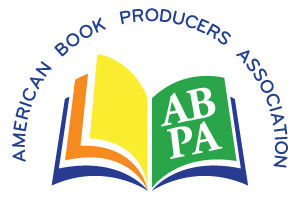
As a reader, there’s nothing more magical than getting your hands on a new book in your favorite series. Whether it’s a series of exciting historical fiction novels, a collection of cookbooks, or expertly-researched and illustrated books about animals, each installment in a new series feels like a deep dive into wonder and intrigue.
Just as a strong series can provide magical moments on the reader’s end, it can also provide many opportunities for publishers, distributors, and book producers to do exciting and creative work. Producing successful series is one of the many ways that members of the ABPA stand out in the publishing community—these talented book producers share what makes a series work, from series spark to series streak!
Multi-Book Series Create Serious Efficiency
When a publisher inks a contract for a new book, the engine starts up . . . the editorial group begins its careful red-lining and fact-checking process, the design group begins to imagine a bold cover and interior layout, marketing and publicity start to consider placement and advertising, and sales and sub-rights start to shop the book to potential buyers all over the world.
When a publisher can activate that machine for a series instead of an individual title, things get a lot more efficient. Book producer Mark Shulman, director of Oomf, Inc., says, “A publisher needs to roll out the same marketing machine for a single title, or a series. It’s more cost-effective to promote a number of books under the same umbrella.”
Mark Shulman teams up with Jim Buckley of Shoreline Publishing on a series called Show Me History, historically accurate graphic novels aimed at middle-grade readers. “The clearest benefit is simple strength in numbers,” Shulman explains. “Numbers of books which help sell each other. Numbers of books ganged up on a contract. Numbers of books across the shelf that make me feel like we’re really producing something of value that stands out. I have to say, there’s something about seeing several inches of spines side by side as opposed to a single book. It does pack a wallop from a few feet back.”

First Thing’s First: A Workflow that Works
There’s a big step that book producers and publishers need to take before they get to the coveted moment of seeing their series span a full shelf. Just like a television series relies on a powerful pilot to set the standard for the look, feel, and content that will define all the episodes, a strong book series needs an excellent first book to define the series. And that can be the biggest challenge for publishers and book producers.
Stephanie Fitzgerald of Spooky Cheetah Press says, “the first hurdle is initial prototype design. Most nonfiction books for kids include extra elements in addition to the main text, such as sidebars, fast facts, special feature back matter, etc. When the team is creating the prototype for the series, they have to consider the wide variety of topics that might be covered.” For example, the way a shark hunts, eats, and digests will not require the same design elements as the same information about a tree frog.
“That’s why close collaboration between editorial and design is essential in the early days. In any case, once the different elements are created, the designer should create tight style guides and author guidelines . . . Then, once the first layout is where it needs to be, an annotated PDF should be shared. And if there’s a glossary, I create a living master so that we’re consistent from book to book.”
Stephanie and her team worked on a series called Elmo’s Learning Adventure with Sesame Workshop and International Masters Publishers. “This project was SO much fun to work on. For about two years I started each morning with an episode of Sesame Street—just to see what the gang was up to.” Working with a big brand like Sesame Workshop brings lots of advantages. The challenge lies in matching the brand’s standards for voice and content every time. Stephanie loved pouring through the treasure trove of Sesame assets, playing with photos of Elmo and friends, and writing text in their voices.
“What I’m most proud of, though,” Stephanie adds, “is what we accomplished with the content. I produce a lot of nonfiction for young readers. And so often the directive is to bring it down a bit. Publishers underestimate what children can absorb and understand and seem to be reluctant to challenge them. With Sesame, it was the opposite. We were constantly raising the bar for our readers and trusting that they would want to stretch and grow to meet the challenges. What a joy!”

Kristin Mehus-Roe of Girl Friday Productions has also worked with leading brands to create children’s series. “The challenge is getting the first one right,” she states, underlining again what other members of the ABPA have emphasized. Kristin’s currently producing National Geographic’s Absolute Expert series for young readers. After the National Geographic brand came up with the series, their in-house team created the first book in the series and then handed the files off to the Girl Friday team. On the second book in the series, the Nat Geo team collaborated closely with Kristin to ensure they achieved the correct brand voice and standard of excellence. After the successful collaboration, Kristin and her team were able to take the series concept and run, and confidently match Nat Geo’s brand’s standards.

A Shared Vision is Vital
The topics you choose to include—or exclude—in a series are just as important to the overall vision as the design and layout. Valerie Tomaselli, President of MTM Publishing, worked on a series of middle-grade historical fiction novels with Hilary Poole, MTM’s-then VP of Editorial Development. The Horrors of History series, conceived by Hilary as a way of getting young readers interested in history, features gripping tales of devastation and bravery, made all the more intriguing by their foundation in real-life events. Valerie explains, “One of the most interesting challenges with Horrors of History was the selection criteria . . . For this one, we didn’t want to focus on events that had already been extensively covered for the age group, such as the Donner Party. But we did want to tell stories that were important enough to be part of history and social studies curricula . . .” The result was a powerful and popular series penned by author T. Neill Anderson.

One word of caution from the seasoned members of the ABPA: It’s important to make sure that the publisher, book producer, author, and design team are all on board with a shared vision for the series. The longevity, number of installments, pacing, and evolution of the series all need to be in alignment for a series to take off.
Creating a series is an investment and it’s important to commit to the series in order to see the return. A series needs to be prioritized as an overall program, not just on a book-by-book basis.
Series as Brand
“As a packager, I’m interested in building brands,” states Leslie Jonath of Connected Dots Media. Leslie produces the Little Local Cookbook series with Countryman Press, and sees her work with the books as building a brand, not just a sequence of related books.
“All books really are brands,” Leslie says, “and expanding a single idea into a series is a great way to support a brand.”

In a successful series, Leslie explains, “the key is to make each book feel really fresh, but maintain the overall consistency. A good brand, and a good series, creates a shared language, a shared style, a shared composition. Then you’ve got the element of surprise with each individual addition. People will immediately recognize the book as part of the series if they’ve seen another title within the series at some point. People begin to look forward to each new book!”
In addition to the regional cookbook series, Leslie has also created a children’s series that she looks forward to placing with the right publisher partner. Go to Sleep, Little Puppy and Go To Sleep, Little Kitten are the first two in an installment that has great potential to feature lots of other adorable animals as they relax and nap.
Just as people put their faith in certain retail brands to deliver consistent quality, readers love to find book series that they can count on for reliable information and entertainment. The brand recognition of a strong series creates more sales and more marketing opportunities over time, while keeping the cost per book significantly lower than one-off books.
The book producers in the ABPA have the formula for creating unique, expert, quality series, and adding serious value for brands, publishers, and distributors. Please reach out to any of the packagers mentioned in this piece, or browse abpaonline.org, if you have questions or brainstorms about producing a series.
